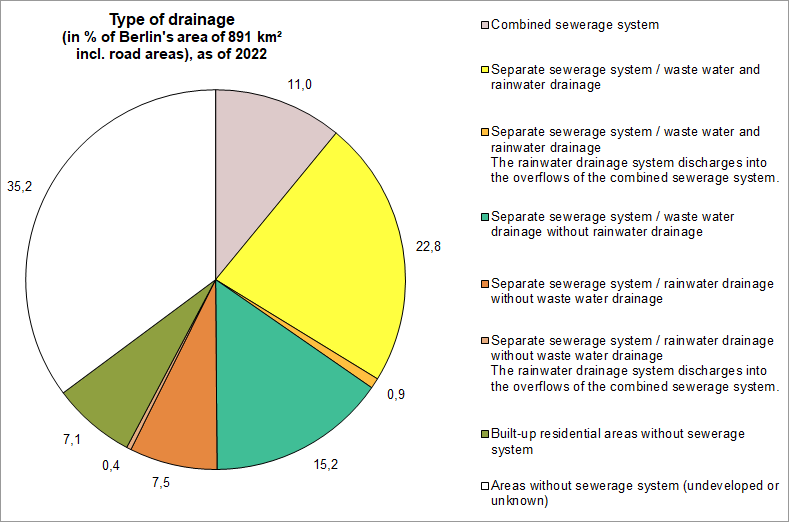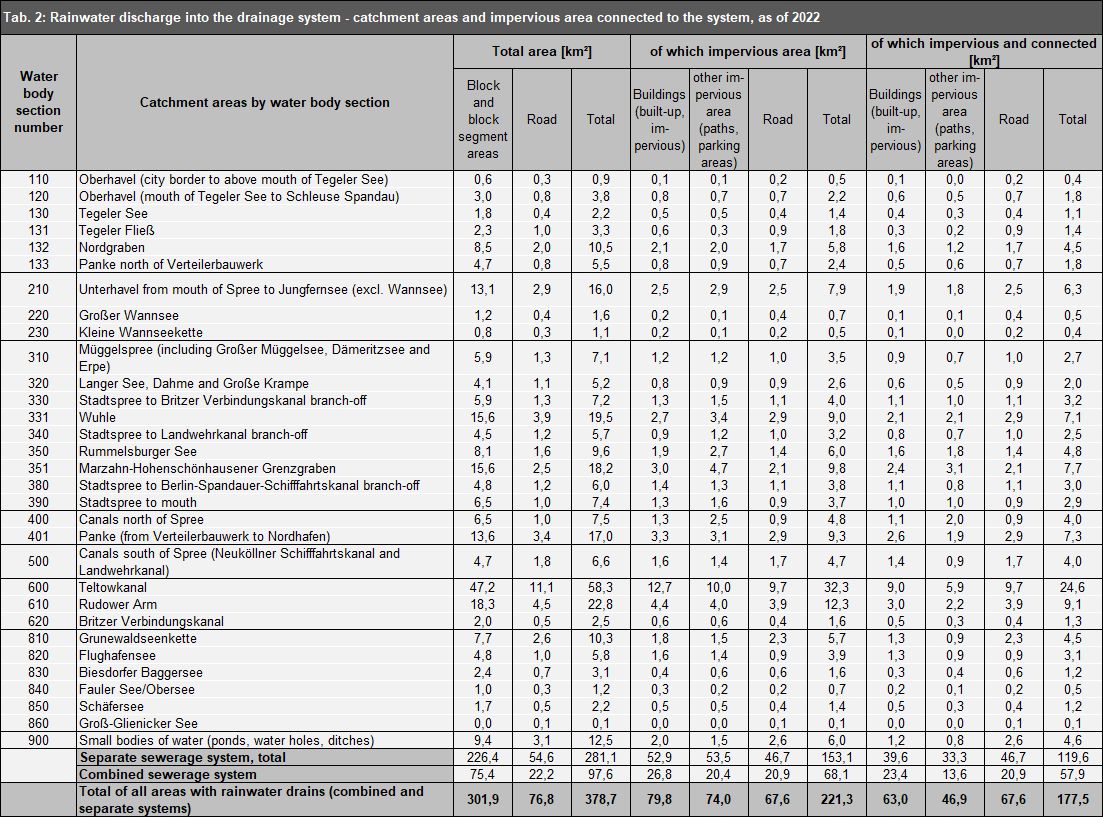02.09.1 Type of Drainage
About 58 % of Berlin’s total area is connected to the drainage system. Of that area, 81 % is drained by the separate sewerage system, the remaining share (19 %) by the combined sewerage system. This reperesents 11 % of the total urban area. Figure 1 presents the area shares by drainage type. The part of the urban area with separate drainage is divided into the following systems: the separate sewerage system with waste water and rainwater drainage accounts for the largest share (22.8 % of the urban area), followed by the separate sewerage system with waste water drainage but without rainwater drainage (e.g. in areas where rainwater percolates completely) with 15.2 %. A share of 7.5 % represents areas with rainwater drainage but without waste water drainage. These are almost always road areas or isolated block and block segment areas, mainly traffic areas. Areas where rainwater drains into the overflows of the combined sewerage system constitute a unique case of the separate sewerage system. Thus, 0.9 % of Berlin’s area is connected to the waste water and rainwater drainage system and discharges water into the overflows of the combined sewerage system. In addition, 0.4 % of the area only has rainwater drainage and also discharges water into the overflows of the combined sewerage system.
Built-up residential areas without drainage include those block and block segment areas that are not connected to the drainage system and contain areas that are both built-up and impervious. These block and block segment areas are particularly prominent in the current update, accounting for 7.1 % of the total area. This is due to the new method in which the built-up area was evaluated based on the degree of imperviousness (cf. Environmental Atlas Map 01.02, SenSBW 2021). In previous editions, imperviousness was not taken into account, instead certain types of use were associated with being undeveloped and not connected to the drainage system. These areas are mainly drained via septic tanks. Transport companies then take the waste water to sewage treatment plants. Almost half of the areas are allotment gardens and weekend cottage areas, i.e. areas that have not been evaluated thus far. Similarly, a considerable proportion of the areas are block and block segment areas with very few structures, such as parks, cemeteries or forest areas with isolated buildings.
Approximately 35% of Berlin’s total area is either not connected to the sewerage network or the Berlin Waterworks have not provided information on the areas (private drainage).


